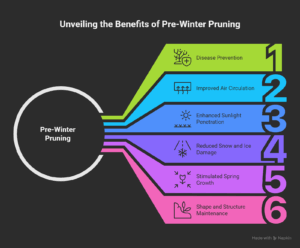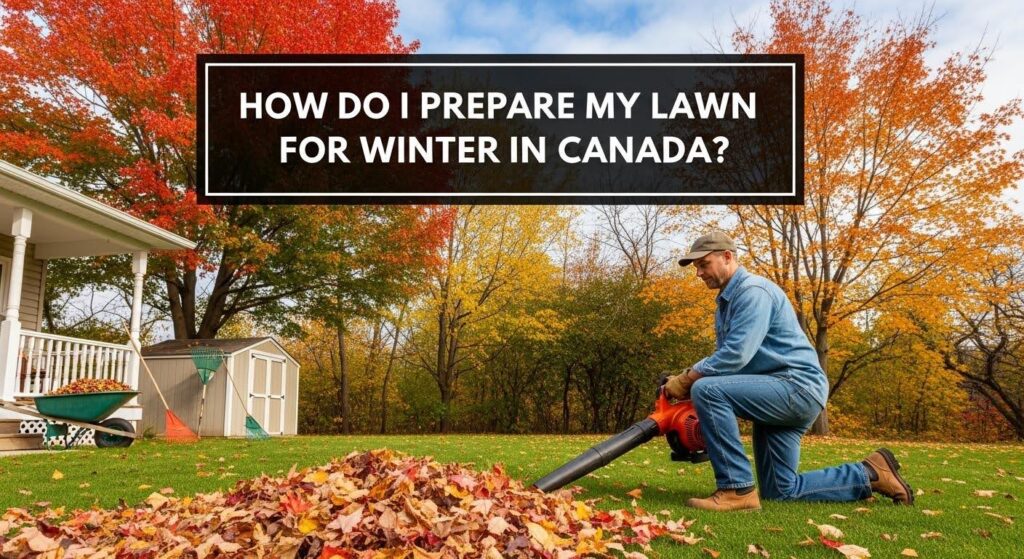Have you ever looked at your yard in late fall and wondered, “Where do I even start before the snow hits?”
You’re not alone. Across Canada, thousands of homeowners face the same question every autumn.
The truth is, the first procedure for cleaning up the yard before winter is more than just raking leaves—it’s about protecting your home, your lawn, and your peace of mind before the deep freeze sets in.
As temperatures drop, uncollected leaves, clogged gutters, and hidden debris can turn into bigger problems like frozen soil, mold, and costly foundation damage.
Yet, most homeowners don’t realize that early pre-winter yard cleanup not only prevents damage but also prepares your lawn for a healthier spring.
By clearing debris, pruning smartly, and checking your drainage, you’re setting the stage for a low-stress winter season.
If you prefer peace of mind over guesswork, Custodia’s Home Management Plans make seasonal care effortless.
With one simple plan, you can bundle your yard cleanup, landscaping, gutter cleaning and lawn care into an affordable monthly service.
So, What Should Be Done First?
Clearing Debris & Removing Leaves
If you’re wondering what to do first when cleaning up your yard in Ontario before winter, start simple—clear the debris and remove fallen leaves.
It’s the foundation of every successful yard cleanup. Most homeowners don’t realize that those colorful autumn leaves, if left untouched, can smother the grass, trap moisture, and invite pests through winter.
The longer they sit, the harder spring recovery becomes.
Here’s what to focus on first:
- Remove fallen leaves and branches: Leaves hold moisture and block sunlight, which can cause fungal lawn diseases and dead patches.
- Clear out garden beds and dead plants: This prevents mold, rot, and pests from overwintering in your soil.
- Use the right tools: Rakes and leaf blowers work fast, while mulching mowers turn waste into free natural fertilizer.
- Bag or compost debris properly: Composting builds nutrient-rich soil, while bagging prevents blocked drains and frozen piles.
- Check hidden corners and fences: Wind often piles leaves in unnoticed areas that later cause drainage issues.
- Finish with a quick visual inspection: Look for uneven ground or clogged gutters that might freeze or crack later.
Pruning In Pre-winter Cleanup

Next is pruning and trimming — a careful step that keeps your yard healthy and balanced through Ontario’s harsh winter months.
Once the debris is cleared, it’s time to shape and protect what remains. Done correctly, it strengthens plants and helps them survive the long freeze ahead.
Here’s what to focus on now:
- Start with damaged or dead branches: Cut anything weak, cracked, or crossing. This stops decay and improves airflow around shrubs and trees.
- Trim overgrown areas lightly: Keep hedges, perennials, and evergreens tidy, but avoid cutting too deep—heavy pruning can shock plants before frost.
- Leave spring bloomers alone: Plants like lilacs, azaleas, or magnolias form buds in fall. Pruning now means fewer blooms next year.
- Disinfect your tools often: Ontario’s damp autumn air spreads fungal spores fast, so clean blades between cuts to protect healthy plants.
- Mulch base areas after pruning: A thin layer of mulch insulates roots, locks in moisture, and prevents freeze-thaw damage.
Prepare Soil, Mulch & Protect Plant Roots Before Winter

Next comes the heart of your pre-winter prep—protecting your soil and plant roots before the frost sets in. This step may seem small, but it’s what separates a thriving spring garden from one that struggles to recover.
Ontario’s winters are unpredictable, and without protection, soil can freeze deep, roots can dry out, and months of hard work can vanish under a blanket of snow.
Here’s how to prepare and protect your garden beds effectively:
- Apply mulch generously
Use shredded leaves, straw, or bark mulch to trap warmth and stabilize soil temperature. It keeps the roots of perennials, shrubs, and bulbs from freezing.
- Add compost or organic matter
A thin compost layer improves soil structure, feeds beneficial microbes, and builds resilience against harsh cold.
- Edge and clean garden borders
Removing weeds and edging your beds now gives your yard a crisp, finished look and reduces springtime work.
- Cover sensitive roots
Use burlap or evergreen boughs over exposed root zones—especially for young trees and delicate ornamentals.
- Topdress if needed
Apply a nutrient-rich topdressing before the ground hardens. It slowly releases nutrients throughout winter.
[Read: When to Top Dress Lawn in Ontario? Guide to do Safely]
- Inspect drainage areas
Poor drainage leads to standing water that freezes and cracks root zones, so check grading and downspout direction.
Preparing your soil before winter isn’t just maintenance; it’s an act of care that keeps your garden alive beneath the frost.
Winterize Hardscape, Gutters & Yard Infrastructure
Next comes one of the most overlooked yet crucial parts of winter prep—protecting your home’s hardscape and outdoor infrastructure before Ontario’s first deep freeze.
Here’s how to get it done the right way:
- Clean gutters and downspouts thoroughly. Clogged gutters can freeze solid, causing ice dams, roof leaks, and even cracked fascia boards. Late fall—before the first hard frost—is the ideal time to clear them.
- Sweep patios, decks, and walkways. Debris and wet leaves can trap moisture, stain stone, and create slippery surfaces when temperatures drop.
- Drain garden hoses and shut off outdoor faucets. Even a small amount of water left inside can freeze and burst pipes, leading to costly repairs.
- Inspect and stow garden tools and power equipment. Clean, oil, and store them in a dry shed or garage to extend their lifespan and ensure they’re ready for spring use.
- Check outdoor lighting and fixtures. Winter nights arrive earlier, so make sure pathways and entryways are well-lit and safe.
Final Rundown: The Complete Procedure For Cleaning Up Your Yard In Canada For Winter
Here’s how the entire procedure comes together:
- Start with debris and leaf removal: Clear fallen leaves, twigs, and garden waste to prevent rot, pests, and blocked drainage.
- Prune and trim wisely: Remove only damaged or diseased growth while leaving strong, healthy branches to withstand frost.
- Prepare soil and protect roots: Add compost, mulch, and coverings to shield perennials, shrubs, and bulbs from freezing temperatures.
- Clean gutters and outdoor surfaces: Clear gutters, decks, and patios to avoid ice buildup, slippery paths, and water damage.
- Drain and store garden equipment: Shut off outdoor faucets, drain hoses, and properly store all garden tools to prevent rust and burst pipes.
- Inspect drainage and lighting: Ensure your yard slopes away from the home, and confirm that pathways remain well-lit and safe during darker months.
Each of these steps works together to protect your lawn, hardscape, and home infrastructure from the harsh effects of Canadian winters.
Call 1-833-410-4357 today or Book Online for a free professional consultation and inspection.






